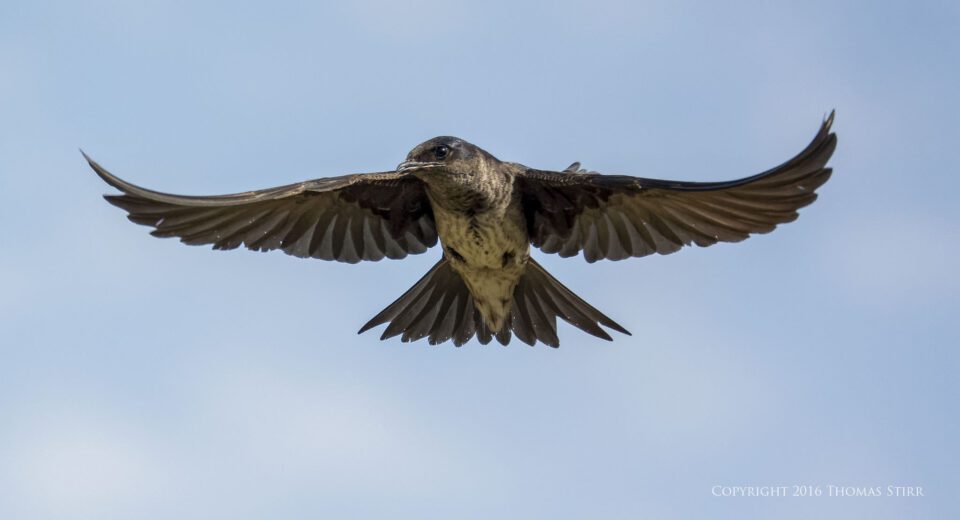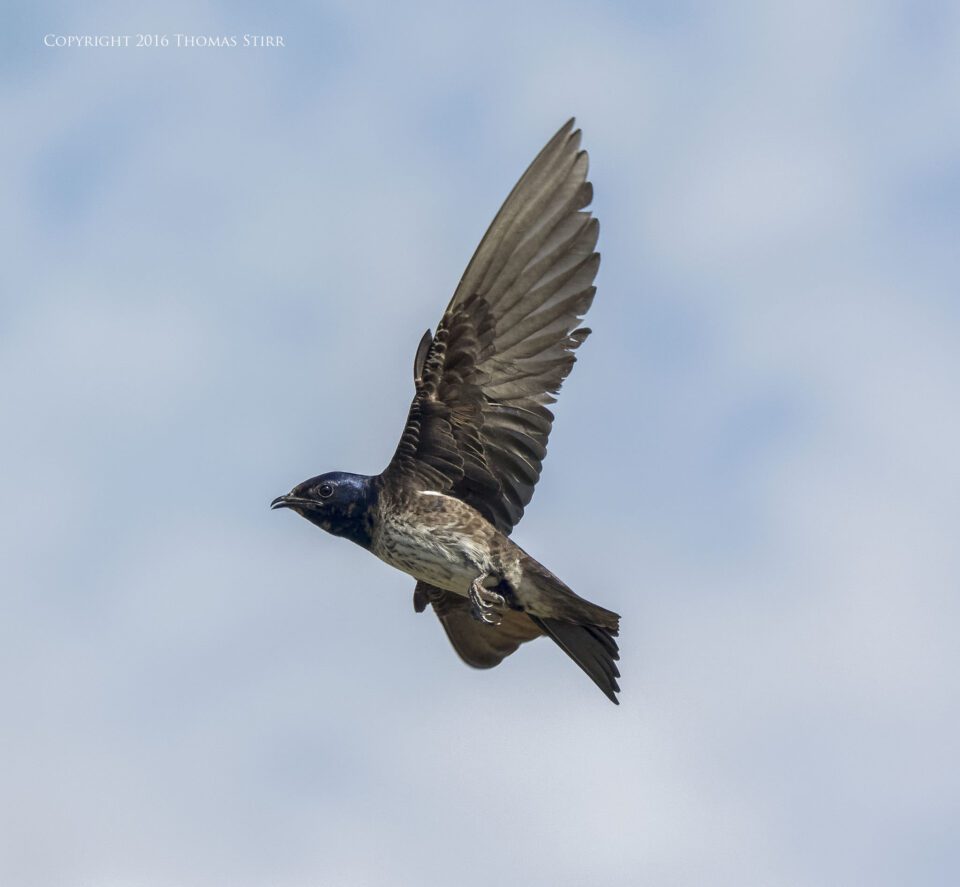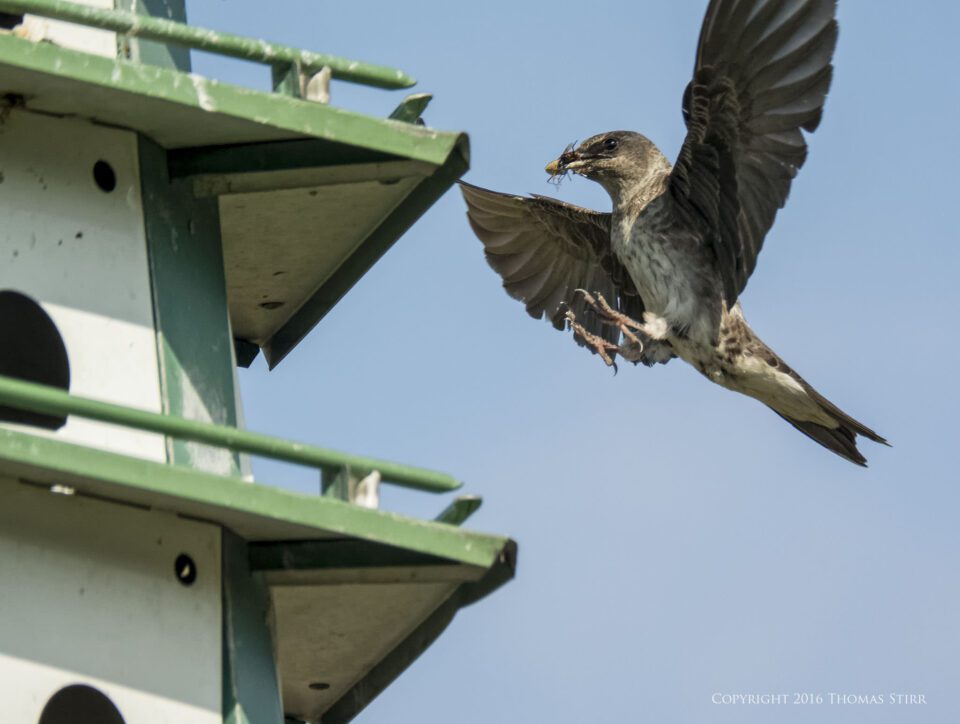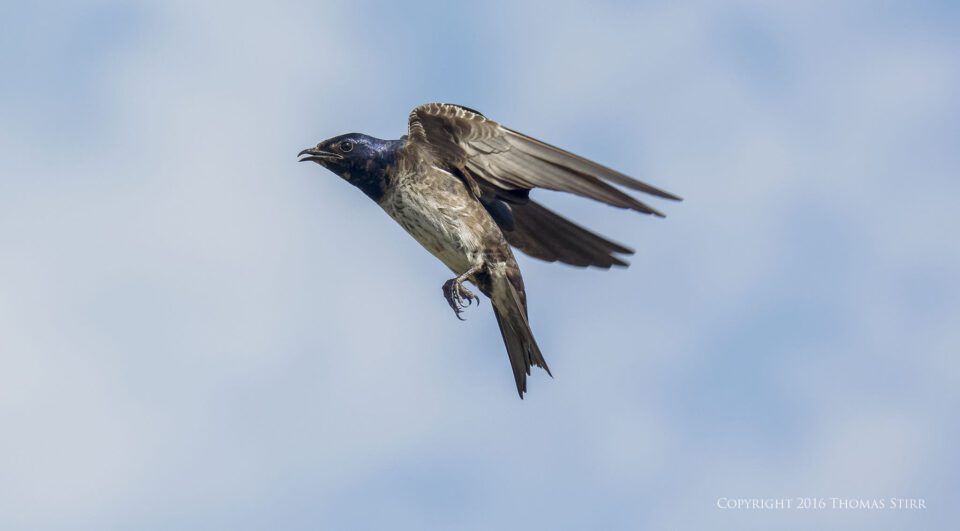For most folks who enjoy photographing wildlife in general, and birds-in-flight in particular, having additional ‘reach’ with their gear is always preferred. I was out yesterday morning attempting to capture some Purple Martin in flight and came to the realization that sometimes shorter is better.
I’ve visited the Purple Martin colony at Ruthven Park in Cayuga Ontario a number of times in the past with very little luck getting any usable images.
Like many photographers I was typically too aggressive in terms of the focal length I was trying to use. It is a good strategy to try to ‘fill the frame’ with a subject bird, but that’s of little use if one can’t keep the bird in the frame long enough to acquire focus on it. Suffice to say that my previous attempts to photograph Purple Martin in flight ended up producing next to nothing to show for my efforts.
Like all swallows, Purple Martin are very fast and aerobatic flyers making it challenging to capture them in flight. While their flight patterns look quite erratic I decided to spend some time observing individual birds to see if there was any kind of consistency to their movements.
I discovered that there were a few somewhat common approaches that the birds would use when returning to their nesting boxes. So, I moved to a different position than I had used in the past. The temptation was too great and I initially tried shooting with my CX 70-300 fully extended. After spending 15 minutes pointlessly trying to capture some BIF images at that focal length the light in my old brain finally went off, and I backed my zoom off and began shooting in the 140mm-220mm focal length range instead.
Obviously I couldn’t get the birds as large as I wanted in the frame, but at least I could track with them in the frame long enough to acquire focus on them. The resulting images required some fairly aggressive cropping. For example, most photographs in this article represent approximately 45% to 65% of sensor surface area, with image subjects being smaller than that. On the positive side, at least I finally captured a few images of these little feathered rocket ships.
After spending a couple of hours I came away with a couple of dozen decent images. Certainly not award winners…but great fun nonetheless.
The most important take-away from the morning for me was the reminder to use a focal length that was appropriate for the speed and size of the subjects being photographed, as well as for my skill level.
Article and all images are Copyright 2016 Thomas Stirr. All rights reserved. No use, adaptation or reproduction of any kind is allowed without written consent. Photography Life is the only approved user of this article. If you see it reproduced anywhere else it is an unauthorized and illegal use.
The post Sometimes Shorter is Better appeared first on Photography Life.












